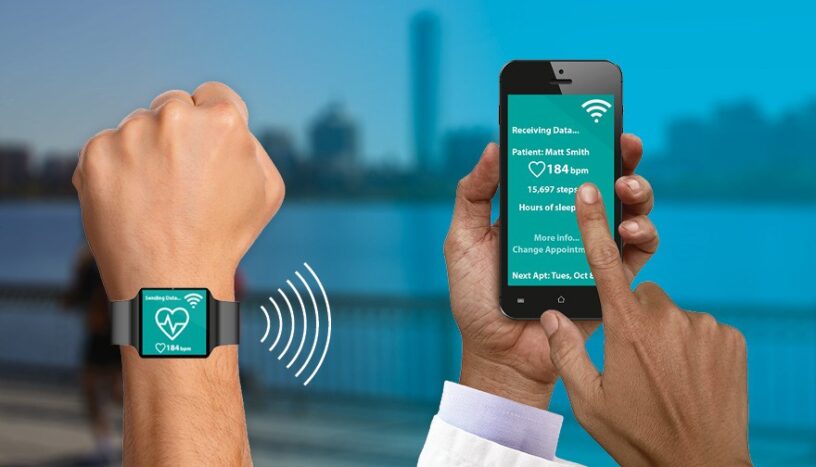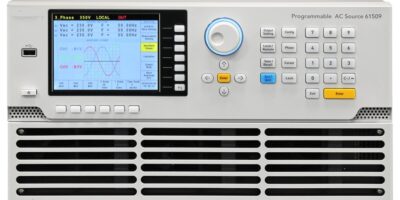M-Health Device Market Overview
The M-Health (Mobile Health) device market encompasses a broad range of devices designed to deliver health-related services and information via mobile technologies. These devices include wearables, sensors, and mobile applications that provide real-time monitoring, diagnostics, and data collection. The market is expanding rapidly, driven by technological advancements, increased consumer awareness, and a growing emphasis on preventive healthcare. M-Health devices are transforming healthcare delivery by making it more accessible, personalized, and efficient.
Introduction
M-Health devices utilize mobile technology to improve health outcomes, offering capabilities such as tracking vital signs, monitoring chronic conditions, and managing fitness and wellness. They provide valuable health insights, enabling individuals to take proactive measures towards their health. M-Health devices range from fitness trackers and smartwatches to sophisticated diagnostic tools that integrate with telemedicine platforms.
Key Components:
- Wearables: Devices worn on the body to monitor health metrics.
- Sensors: Embedded in devices to capture data such as heart rate, steps, and sleep patterns.
- Mobile Applications: Software that collects, analyzes, and presents health data to users.
Innovations in Wearable M-Health Devices for Fitness Tracking
Wearable m-health devices have evolved significantly, offering advanced features for fitness tracking:
- Multi-Sensor Integration: Modern wearables incorporate multiple sensors to track various health metrics such as heart rate, steps, sleep quality, and calories burned.
- Biometric Data: Devices now provide biometric data, including blood oxygen levels (SpO2), electrocardiogram (ECG), and stress levels, enhancing fitness and health monitoring.
- Personalized Insights: Advanced algorithms analyze user data to offer personalized fitness recommendations and insights.
- Longer Battery Life: Innovations in power management have extended battery life, allowing continuous monitoring without frequent recharging.
- Water Resistance: Many wearables are designed to be water-resistant, making them suitable for swimming and other water-based activities.
Role of AI in Enhancing M-Health Device Functionalities
Artificial Intelligence (AI) is revolutionizing the capabilities of m-health devices by enabling:
- Predictive Analytics: AI algorithms analyze health data to predict potential health issues, allowing for early intervention.
- Personalized Health Management: AI provides tailored health advice and fitness plans based on individual data and preferences.
- Real-Time Data Analysis: AI processes data in real-time, offering immediate feedback and alerts for abnormal health parameters.
- Enhanced Diagnostics: AI enhances diagnostic accuracy by interpreting complex data patterns, assisting in the identification of conditions such as arrhythmias or sleep disorders.
- Voice Interaction: AI-powered voice assistants facilitate user interaction with m-health devices, making it easier to access health information and manage settings.
User Experience
User experience (UX) is critical to the adoption and effectiveness of m-health devices:
- Intuitive Interfaces: Devices are designed with user-friendly interfaces to simplify navigation and data interpretation.
- Customization: Users can customize settings and notifications according to their health goals and preferences.
- Data Visualization: Clear and engaging data visualization helps users understand their health metrics and progress.
- Comfort and Design: Wearable devices are designed to be comfortable, stylish, and unobtrusive, encouraging consistent use.
- Interoperability: Seamless integration with other health platforms and devices enhances the overall user experience by providing comprehensive health insights.
Receive the FREE Sample Report of M-Health Device Market Research Insights @ https://stringentdatalytics.com/sample-request/m-health-device-market/13267/
Market Segmentations:
Global M-Health Device Market: By Company
• Allscripts
• Apple
• Athenahealth
• Cerner
• Ge Healthcare
• Philips
• Medtronics
• Johnson & Johnson
Global M-Health Device Market: By Type
• Diagnostic Device
• Therapeutic Device
Global M-Health Device Market: By Application
• Adult
• Children
Regional Analysis of Global M-Health Device Market
All the regional segmentation has been studied based on recent and future trends, and the market is forecasted throughout the prediction period. The countries covered in the regional analysis of the Global M-Health Device market report are U.S., Canada, and Mexico in North America, Germany, France, U.K., Russia, Italy, Spain, Turkey, Netherlands, Switzerland, Belgium, and Rest of Europe in Europe, Singapore, Malaysia, Australia, Thailand, Indonesia, Philippines, China, Japan, India, South Korea, Rest of Asia-Pacific (APAC) in the Asia-Pacific (APAC), Saudi Arabia, U.A.E, South Africa, Egypt, Israel, Rest of Middle East and Africa (MEA) as a part of Middle East and Africa (MEA), and Argentina, Brazil, and Rest of South America as part of South America.
Click to Purchase M-Health Device Market Research Report @ https://stringentdatalytics.com/purchase/m-health-device-market/13267/
Growth Opportunities
The m-health device market presents numerous growth opportunities:
- Chronic Disease Management: Devices tailored for monitoring chronic conditions such as diabetes, hypertension, and respiratory disorders have significant market potential.
- Aging Population: As the global population ages, there is increased demand for m-health devices to support elderly care and independent living.
- Emerging Markets: Expanding into emerging markets where access to traditional healthcare is limited can drive market growth.
- Fitness and Wellness: Rising consumer interest in fitness and wellness fuels demand for advanced wearable devices.
- Telemedicine Integration: M-health devices that integrate with telemedicine platforms offer opportunities for remote patient monitoring and virtual care.
Impact of M-Health Devices on Reducing Healthcare Costs
M-health devices contribute to reducing healthcare costs in several ways:
- Preventive Care: By promoting preventive care and early intervention, m-health devices help avoid costly medical treatments and hospitalizations.
- Chronic Disease Management: Continuous monitoring allows for better management of chronic diseases, reducing complications and associated healthcare expenses.
- Remote Monitoring: Devices enable remote monitoring, decreasing the need for in-person visits and reducing travel and administrative costs.
- Efficient Resource Utilization: Healthcare providers can optimize resource allocation by using data from m-health devices to prioritize care based on patient needs.
- Patient Empowerment: Empowering patients with self-monitoring tools leads to improved self-management and adherence to treatment plans, reducing the overall burden on healthcare systems.
Impact of Government Policies
Government policies play a crucial role in shaping the m-health device market:
- Regulation and Standards: Governments are establishing regulations and standards to ensure the safety, efficacy, and interoperability of m-health devices.
- Reimbursement Policies: Policies that provide reimbursement for m-health devices encourage adoption among healthcare providers and patients.
- Data Privacy and Security: Regulations around data privacy and security are essential for protecting patient information and building trust in m-health technologies.
- Incentives for Innovation: Government incentives and funding for innovation in digital health and m-health technologies drive market growth and development.
- Public Health Initiatives: Government-led public health initiatives that promote digital health solutions support the widespread adoption of m-health devices.
Demand and Supply
Demand:
- Consumer Awareness: Increasing consumer awareness of the benefits of m-health devices drives demand for fitness trackers, health monitors, and wellness apps.
- Healthcare Integration: Growing integration of m-health devices into healthcare systems and telemedicine platforms increases demand from healthcare providers.
- Personalized Health: The trend towards personalized health and wellness solutions fuels consumer interest in devices that offer tailored insights and recommendations.
Supply:
- Technological Advancements: Advances in sensor technology, AI, and data analytics enhance the supply of innovative and sophisticated m-health devices.
- Market Competition: Intense competition among manufacturers leads to diverse product offerings, driving down prices and increasing availability.
- Distribution Channels: Expansion of distribution channels, including online retail and partnerships with healthcare providers, enhances market reach and accessibility.
Forecast
The m-health device market is expected to experience substantial growth in the coming years:
- Market Size: The global m-health device market is projected to grow at a compound annual growth rate (CAGR) of around 20-25% through 2030, driven by technological advancements and increased consumer adoption.
- Regional Growth: North America and Europe are expected to lead the market due to high healthcare expenditure and technological adoption, while Asia-Pacific is anticipated to see significant growth due to expanding healthcare infrastructure and rising consumer awareness.
- Technological Evolution: Continued advancements in AI, sensor technology, and data analytics will drive the development of more advanced and versatile m-health devices.
- Consumer Trends: Rising interest in health and wellness, along with increased use of telemedicine and digital health platforms, will fuel market demand.
About Stringent Datalytics
Stringent Datalytics offers both custom and syndicated market research reports. Custom market research reports are tailored to a specific client’s needs and requirements. These reports provide unique insights into a particular industry or market segment and can help businesses make informed decisions about their strategies and operations.
Syndicated market research reports, on the other hand, are pre-existing reports that are available for purchase by multiple clients. These reports are often produced on a regular basis, such as annually or quarterly, and cover a broad range of industries and market segments. Syndicated reports provide clients with insights into industry trends, market sizes, and competitive landscapes. By offering both custom and syndicated reports, Stringent Datalytics can provide clients with a range of market research solutions that can be customized to their specific needs.
Reach US
Stringent Datalytics
+1 346 666 6655
Social Channels:
Linkedin | Facebook | Twitter | YouTube




Leave a Reply